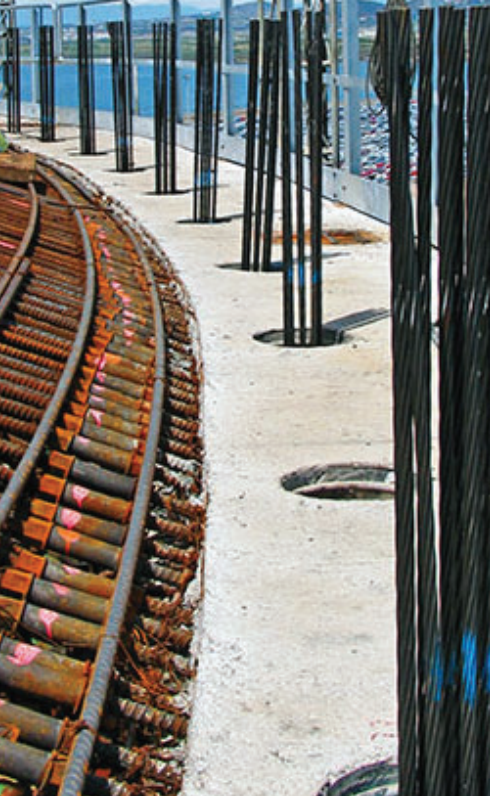LNG Tanks
ESPT offers design, supply, and construction of pre-stressed (post-tensioned) LNG tanks, including ultra-low reinforcement and necessary construction equipment. Our experts support contractors throughout the project.
LNG Tank Construction
LNG storage tanks normally consist of a steel inner container and a concrete outer container, designed and built by different specialist firms. The design and construction must be coordinated closely.
EN 14620 Part 2 specifies general requirements for materials, design, fabrication, welding, and installation of metal components for tanks. Steel types and thicknesses are defined based on the liquefied gas stored, with minimum thicknesses of 40mm for butane and propane tanks and 50mm for ethane and LNG tanks.
Prestressing Steel Specifications
Prestressing steel, anchorages, and ducts must comply with EN 1992-1-1. They must also be verified for suitability at low temperatures, with specific requirements for temperatures below -20°C.
Conventional reinforcement must comply with EN 1992-1-1 if temperatures do not drop below -20°C during normal operation or abnormal conditions.

Cryogenic Reinforcement
Reinforcement and socket couplers in tension components exposed to temperatures below −20°C must meet additional requirements. Cryogenic reinforcement, with higher nickel and alloy content, is used for the inner face of concrete walls, where temperatures can drop to about −150°C during liquid spill scenarios.
ULTS for LNG Tanks
ULTS has been developed for constructing large-scale LNG tanks and has been used worldwide for various LNG projects. It meets the updated DIN EN 14620-3 standards for ULTS material testing.
Grade 500/600 ULTS offers a cost-effective alternative to cryogenic rebar, with high ductility exceeding standards for ultra-low temperature applications.
